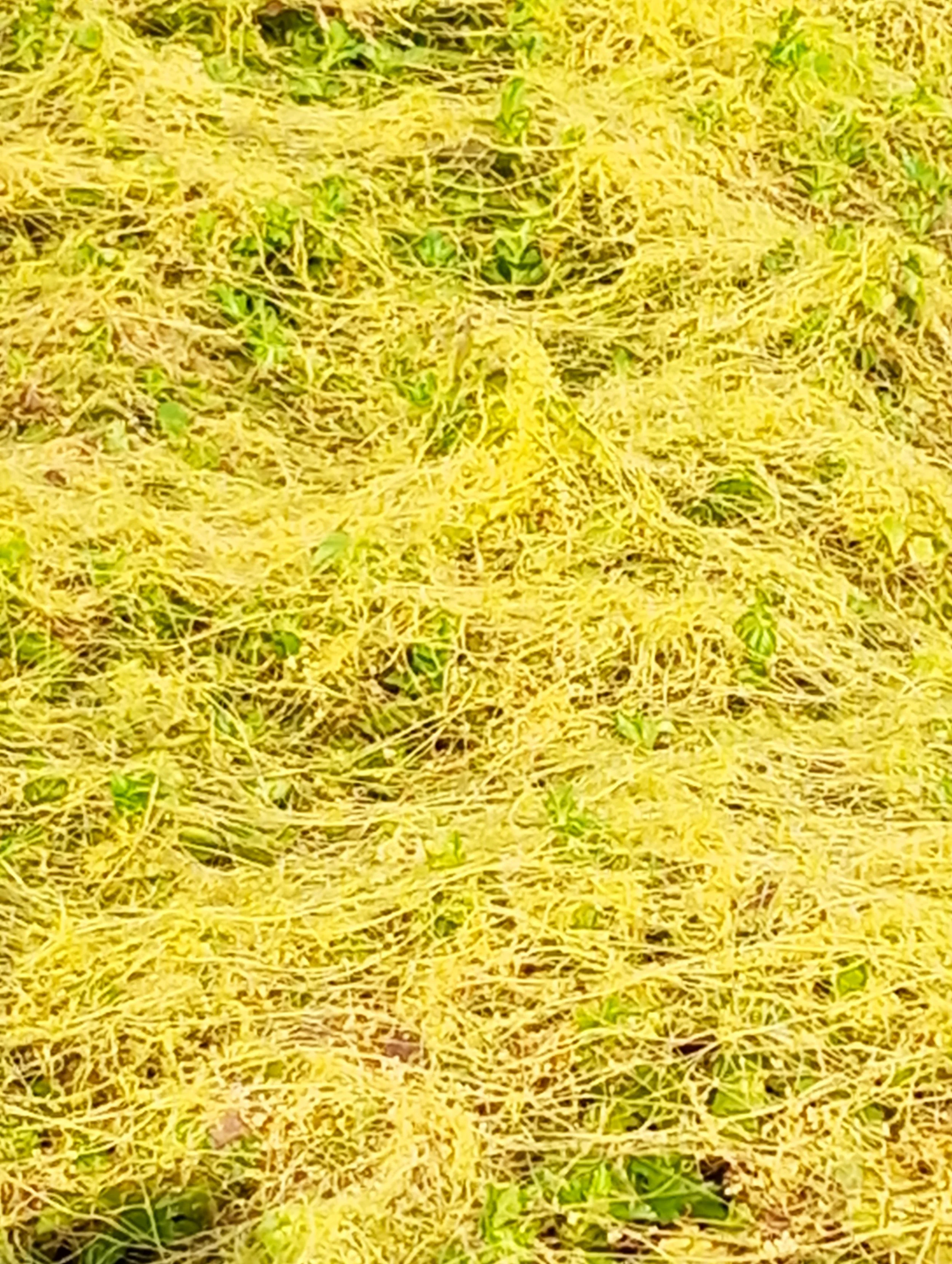When the parasitic plant Dodder (genus Cuscuta) appears in the garden, it is easy to imagine that someone has dropped a package of yellow drinking straws, or that sprites in the fairy garden have been playing with spray cans of Silly String. The random threads of yellow or orange remind me of those nylon cords used to tie hay bales or pine needle bales. Dodder does not contain chlorophyll and must obtain all its nutrition from another plant, thus defining itself as a parasite. While some parasitic plants barely damage their hosts, Dodder can weaken or even kill a host plant by sucking away its moisture and nutrition.
Dodder starts life as a seed. Once it sprouts, this relative of the common morning glory goes seeking a sugar daddy. When a victim plant is targeted (ten days or less from germination), Dodder inserts a feeding tube, known botanically as a haustorium, to extract sustenance from the host. Once the feeding tube is in place, the roots detach from soil and it becomes completely dependent on the host. It twines around the food source, attaching new feeding tubes as it grows. The stems appear leafless, although tiny leaves are hidden along the rope-like stems.
Dodder has difficulty invading a woody companion, so most of its victims are soft stemmed, herbaceous plants. Several years ago, I spotted a vacant field of kudzu that had been covered with Dodder. It had spread from plant to plant, ensnaring the entire field. It looked like a bizzare mixed-media artwork. Preferred target plants range from clover to dahlias, petunias to potatoes.
Despite its pleasantly unique appearance (I mean, who doesn’t love Silly String?), if you see this plant anywhere in your garden, you should hasten to remove it by pruning away the affected branches of the host plant. This is a viciously competitive pest. If the host has been invaded in numerous places, the entire plant may need to be removed. There are no herbicides that will kill Dodder without killing the host plant as well. The tiny white or yellow flowers appear in late summer to early fall. The blooms produce pea-like fruits that contain four seeds.
Freezing temperatures kill Dodder, so it is less of a problem in locations with winter cold. In frost-free areas, it grows unchecked. In temperate areas where Dodder has grown in the past, be vigilant in spring to remove any new plants that germinate from last season’s seeds.
Dodder forming a net on host plant. Photo By Orangerind - Own work, CC BY-SA 4.0, https://commons.wikimedia.org/w/index.php?curid=124687004
An infestation of Dodder, entirely covering an area of plants of unknown variety.
By Salil Kumar Mukherjee - Own work, CC BY-SA 4.0, https://commons.wikimedia.org/w/index.php?curid=148639645


